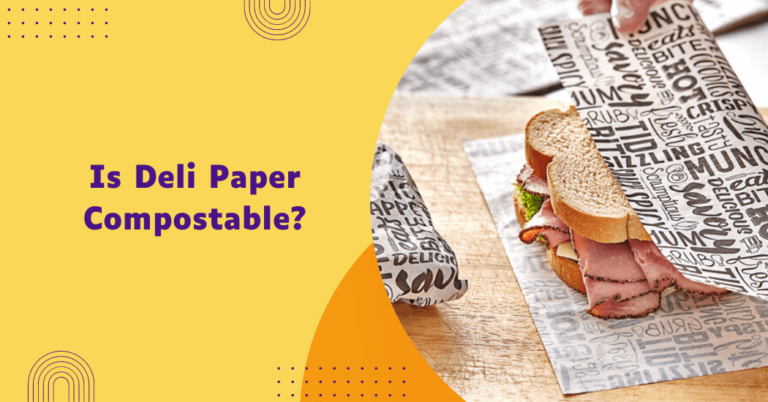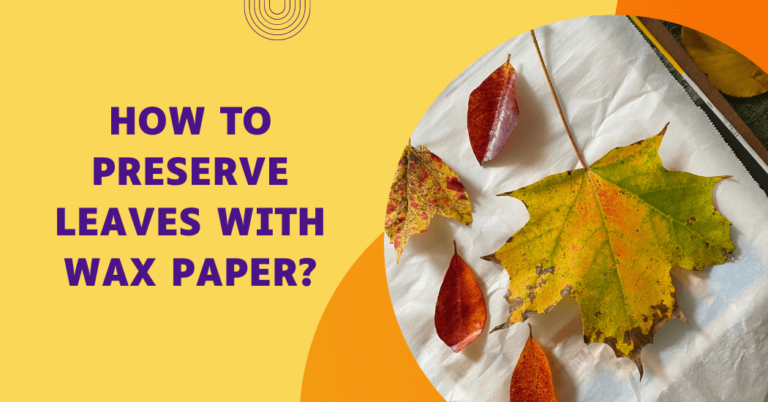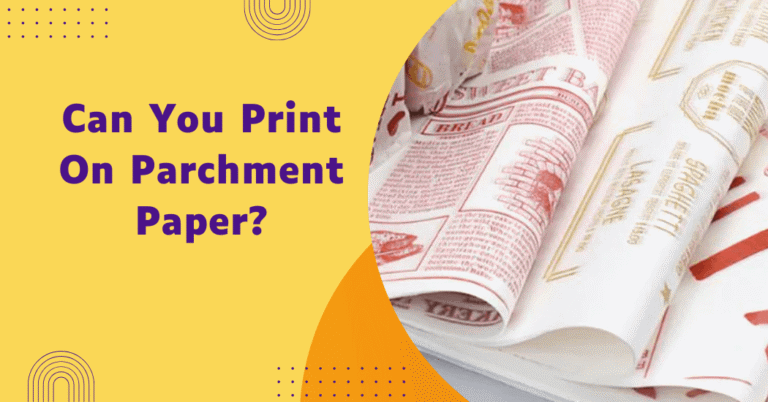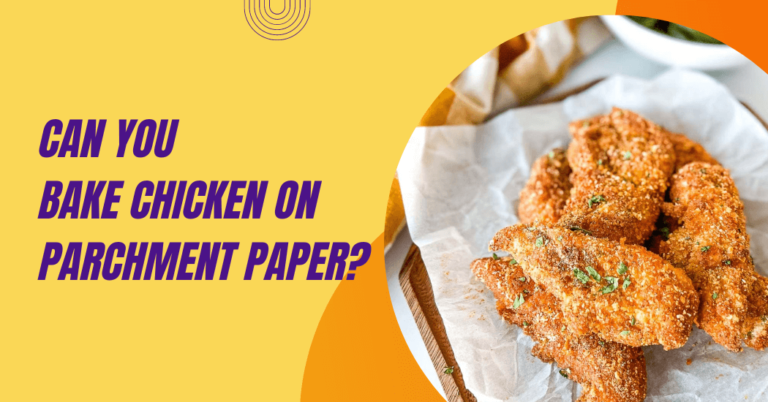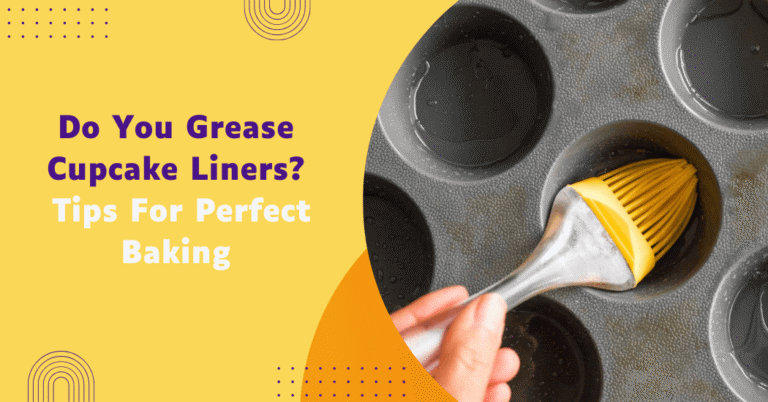Can you use wax paper for baking?
Baking is a delicate art that requires precision and the right tools to achieve perfect results. As enthusiasts and seasoned bakers alike explore various options in their quest for ideal baking materials, one common question arises: Can you use wax paper for baking?
This inquiry delves into the compatibility of wax paper with the baking process, considering factors such as heat resistance, potential hazards and the overall impact on the quality of baked goods.
In this exploration, we aim to provide a concise and informative analysis to help bakers make informed decisions about incorporating wax paper into their baking endeavors. Stay tuned!
Use Of Wax Paper For Baking
Yes, you can use wax paper for certain types of baking but it’s important to note its limitations. Wax paper has a thin coating of wax on one side, which can melt at high temperatures. Therefore, it is best suited for tasks such as lining cake pans, making no-bake cookies or rolling out dough.
However, it is not recommended for uses that involve high temperatures or direct contact with an open flame, such as broiling or grilling, as the wax coating may melt or catch fire.
For these high-temperature applications, it’s better to use parchment paper for baking, which is designed to withstand higher heat levels. Always check the manufacturer’s recommendations on the packaging to ensure that the specific wax paper you have is suitable for baking.
Factors to consider when using wax paper for baking
Before using wax paper for baking, there are a few key factors to keep in mind to ensure the best results and avoid any potential hazards. These include:
- Temperature limitations: Wax paper has a thin layer of wax on one side, which makes it more susceptible to melting at high temperatures. Therefore, it is important to consider the temperature requirements of your recipe and make sure that the wax paper can handle it.
- Non-stick properties: The non-stick properties of wax paper make it a popular choice for baking. However, these properties can vary among different brands and types of wax paper. It’s always best to double-check the non-stick capabilities of your chosen wax paper before using it.
- Not suitable for broiling or grilling: Wax paper is not suitable for use under a broiler or on a grill, as it can ignite at high temperatures. Stick to using it in conventional ovens at temperatures within its specified range.
- Use in bottom layers: Place wax paper on the bottom of baking pans or cookie sheets rather than using it for covering or wrapping food. This helps prevent the wax from coming into direct contact with the food.
- Direct contact with food: When using wax paper for baking, it’s crucial to ensure that the wax-coated side does not come into direct contact with any food. This is because the wax used in making the paper may not be food-grade and therefore not safe for consumption.
- Read the package instructions: Always read the manufacturer’s instructions on the packaging to ensure that you are using the wax paper correctly and safely. Different brands may have different recommendations, so it’s essential to check for each specific product.
Advantages of using wax paper for baking
While wax paper may have some limitations for baking, there are still several advantages to using it in the kitchen. These include:
- Non-stick surface: Wax paper has a non-stick surface that can prevent baked goods from sticking to the pan. This is especially useful for items like cookies, brownies and certain types of cakes.
- Easy clean-up: Wax paper is disposable, which means there is no need to fuss with cleaning up after baking. Simply throw away the used wax paper and you’re done!
- No need for greasing: Since wax paper is naturally non-stick, it eliminates the need for greasing the baking pan. This can save time and reduce the amount of added fats in your recipe.
- Reduces clean-up time: Using wax paper as a lining also means that the pan is protected from any spills or drips, making clean-up quick and easy.
- Cost-effective: Wax paper is relatively inexpensive and widely available, making it a cost-effective option for baking needs.
Limitations when using wax paper for baking
While there are some advantages to using wax paper for baking, it’s essential to also consider its drawbacks. These include:
- Limited heat resistance: As mentioned earlier, wax paper has a lower heat tolerance compared to other types of parchment paper. This means it is not suitable for all types of baking and may limit the variety of recipes you can make.
- Not suitable for high-heat cooking: Wax paper should not be used in broilers or on grills as it can ignite at high temperatures.
- Potential hazards: The wax coating on the paper can melt, drip and potentially catch fire, making it a potential hazard in the kitchen.
- Cannot be reused: Unlike silicone mats or reusable parchment paper, wax paper is for single use only. This can contribute to waste and additional costs in the long run.
- Limited availability: Wax paper may not be readily available in all stores or countries, making it more challenging to find for those who prefer using it for baking.
- Not eco-friendly: Wax paper is not recyclable and can contribute to environmental waste. Consider using reusable alternatives if sustainability is a concern.
Tips for using wax paper in baking
To ensure the best results when using wax paper for baking, here are some helpful tips to keep in mind:
- Pre-cut sheets: Consider pre-cutting sheets of wax paper before starting your baking project. This will save time and hassle while handling the paper during the baking process.
- Use in conventional ovens only: As mentioned earlier, wax paper is not suitable for broiling or grilling, so stick to using it in a conventional oven.
- Avoid direct contact with food: Make sure that the wax-coated side of the paper does not come into direct contact with any food items during baking.
- Check for appropriate temperature limitations: Always check the manufacturer’s recommendations on the packaging to ensure that you are using the wax paper at a suitable temperature range.
- Do not reuse: Wax paper is designed for single-use only and should not be reused as it can become brittle and potentially tear or melt during baking.
- Use in bottom layers: Place wax paper on the bottom of baking pans or cookie sheets rather than using it for covering or wrapping food. This helps prevent the wax from coming into direct contact with the food.
- Store properly: Store wax paper in a cool, dry place to avoid exposure to moisture. Moisture can cause the wax coating to melt and stick together, making it challenging to separate the sheets.
- Do not use in microwaves: Wax paper is not suitable for use in microwaves as it can melt and potentially cause a fire.
Alternatives to wax paper for baking
If wax paper is not suitable or available for your baking needs, there are several alternatives you can use instead.
- Parchment paper: Parchment paper is a popular alternative to wax paper and has a higher heat tolerance. It is also non-stick and easy to use, making it a great option for baking.
- Silicone baking mats: These durable, reusable mats are made from food-grade silicone and can withstand high temperatures. They are an eco-friendly option for those looking to reduce waste in the kitchen.
- Aluminum foil: While not as effective for preventing sticking, aluminum foil can be used as a substitute for wax paper in certain baking recipes.
- Cooking spray: For recipes that require greasing the pan, using cooking spray can eliminate the need for any type of parchment paper or lining.
- Coconut oil: Similar to cooking spray, using a small amount of coconut oil can help prevent sticking in recipes that require greasing the pan.
How to choose a suitable baking liner?
When choosing a baking liner, there are a few factors to consider including heat resistance, non-stick properties and potential hazards. Heat resistance is crucial as it ensures that the liner will not melt or catch fire when exposed to high temperatures. This factor becomes even more critical for recipes that require long baking times.
Non-stick properties are also important to prevent baked goods from sticking to the pan, making for easier cleanup. Wax paper and parchment paper both offer non-stick properties but parchment paper is generally considered to be more effective in this aspect.
Potential hazards such as chemicals or toxins leaching into food should also be taken into consideration when choosing a baking liner. While wax paper is generally deemed safe for use with food, some studies suggest that it may contain trace amounts of toxins when exposed to high heat.
FAQs – Wax Paper for Baking
Can I use wax paper in the microwave?
No, it is not recommended to use wax paper in the microwave as the wax coating can melt and potentially cause a fire. It is best to stick to using microwave-safe containers or other alternatives such as parchment paper or silicone mats. So, you must avoid using them in microwaves at all costs.
Is wax paper environmentally friendly?
Wax paper is not considered environmentally friendly as it is not recyclable or compostable. The wax coating on the paper prevents it from being broken down in recycling or composting facilities.
Furthermore, if burned, wax paper can release harmful toxins into the environment. Thus, for those seeking an eco-friendly alternative, consider using reusable options like silicone baking mats or compostable options like unbleached parchment paper.
Is wax paper the same as a baking sheet?
No, wax paper is not the same as a baking sheet. Wax paper is designed for single use and should be placed on top of a baking sheet or pan to prevent food from sticking.
Baking sheets, on the other hand, are reusable and can withstand high temperatures without melting or catching fire. So, it is important to use them in conjunction with each other for optimal baking results.
Is it better to bake with wax paper or parchment paper?
It ultimately depends on personal preference and the type of recipe being made. Both wax paper and parchment paper offer non-stick properties but parchment paper is generally considered to be more effective in this aspect.
However, for recipes that require longer baking times or higher temperatures, wax paper may not hold up as well as parchment paper. It is best to experiment with both options and see which works best for your specific baking needs. So, you should try both of them and choose the one that suits your recipe better.
Conclusion
In conclusion, wax paper can be a useful tool in the kitchen for preventing food from sticking during baking. However, it is important to follow safety precautions and consider alternative options if necessary.
By following these tips and recommendations, you can make the most out of your wax paper and ensure safe and successful baking results.
So, always keep the above points in mind while using wax paper for baking. Understanding the appropriate uses of wax paper in the kitchen will help ensure successful and safe baking experiences.

